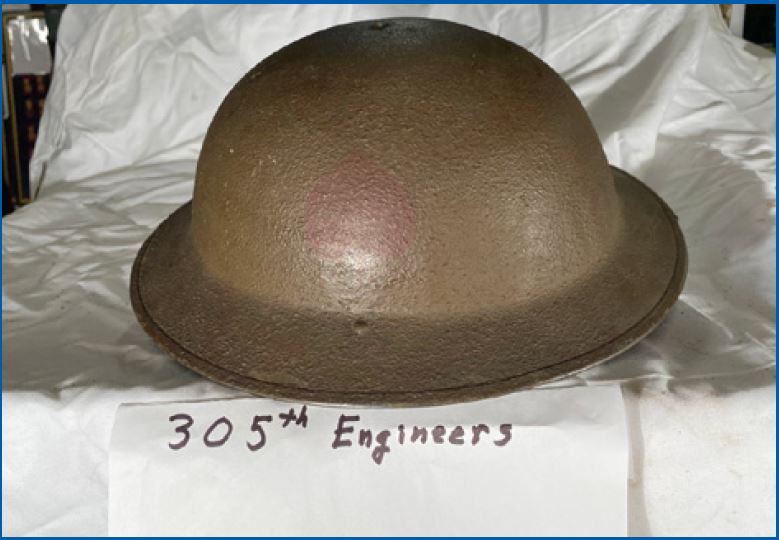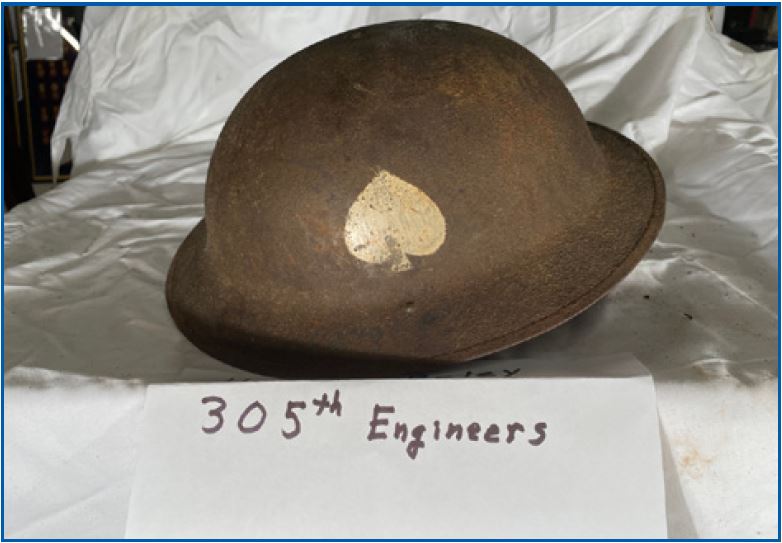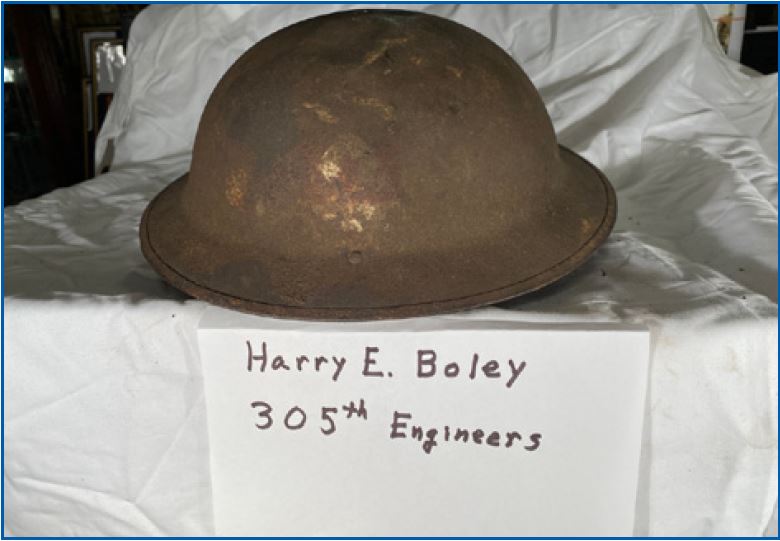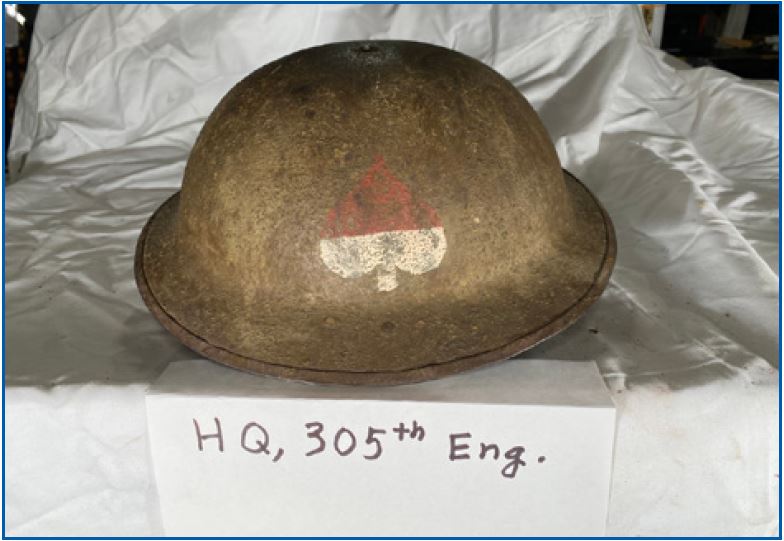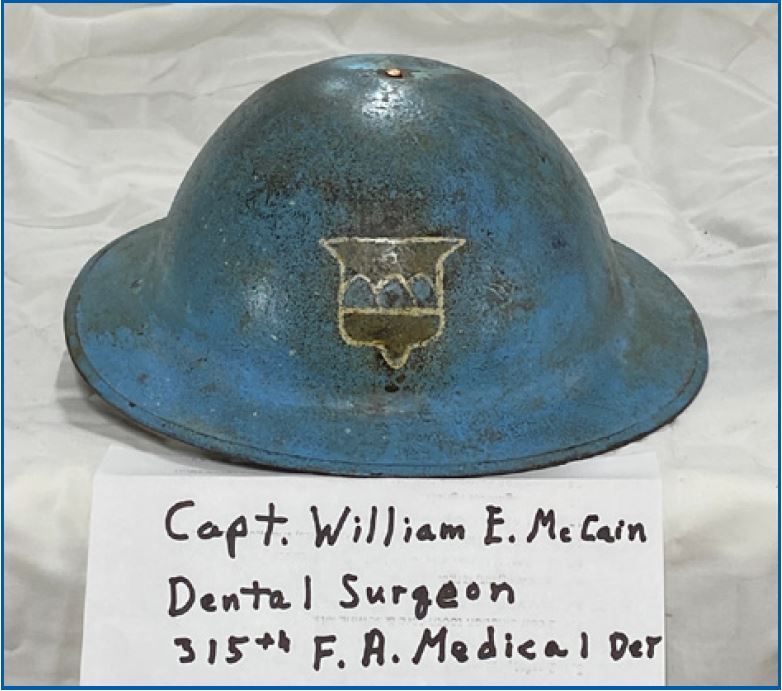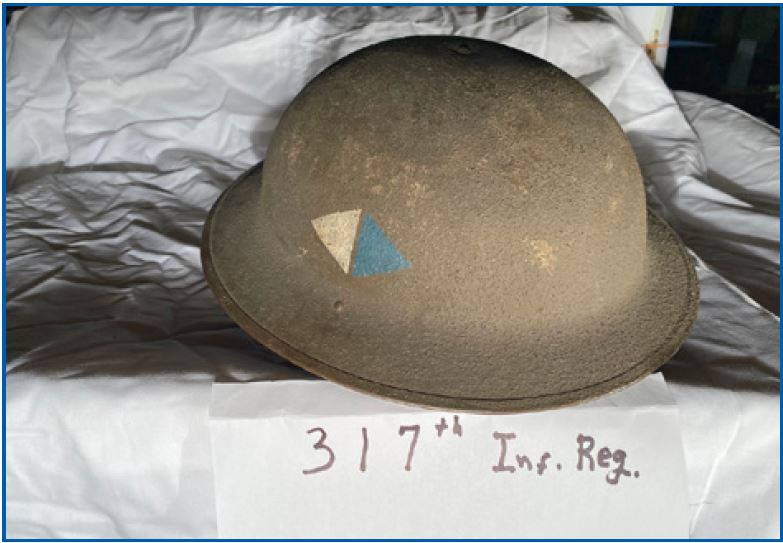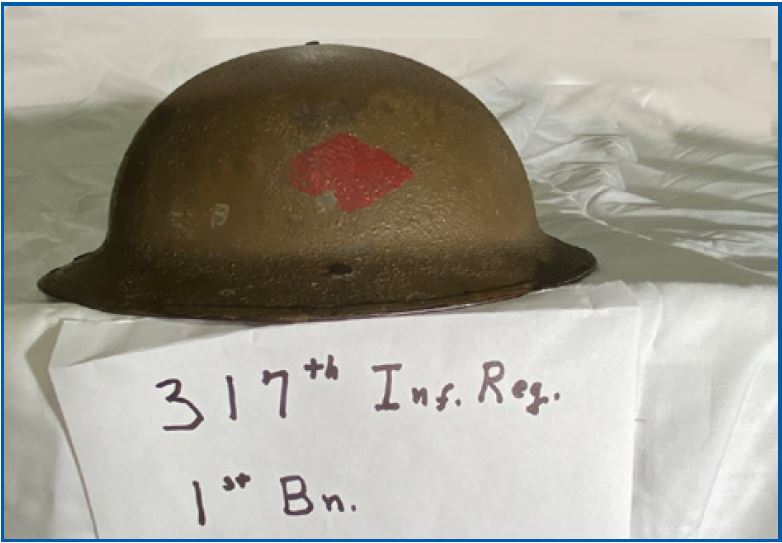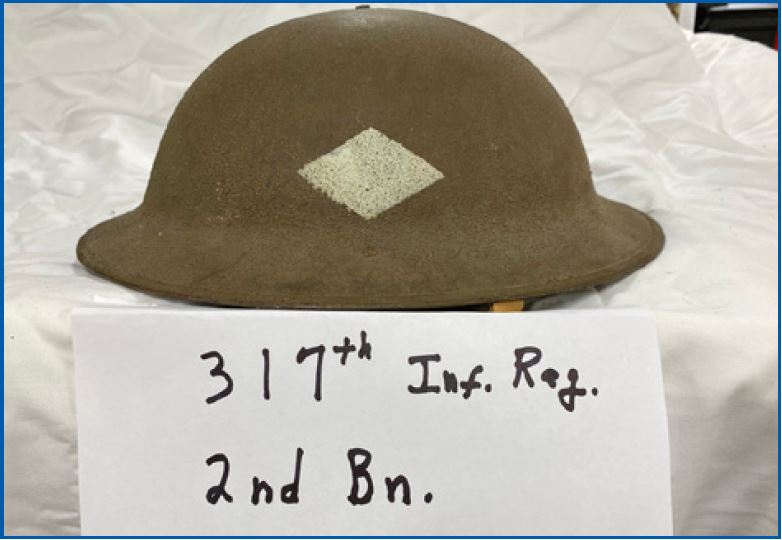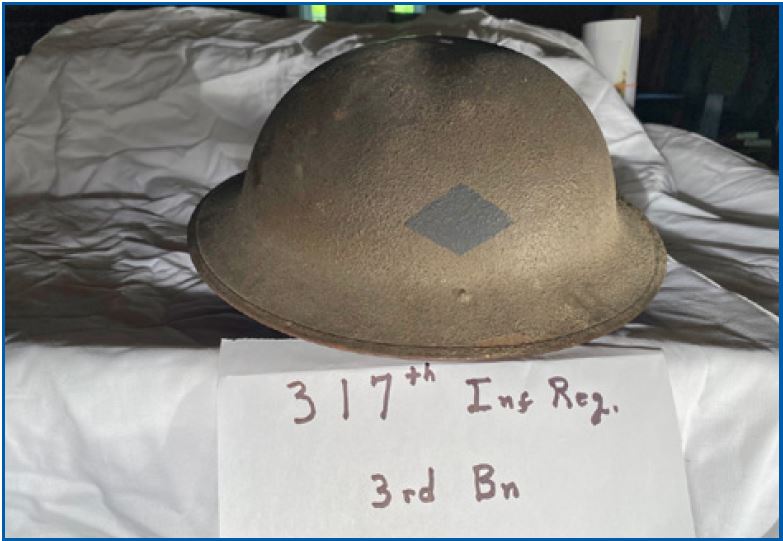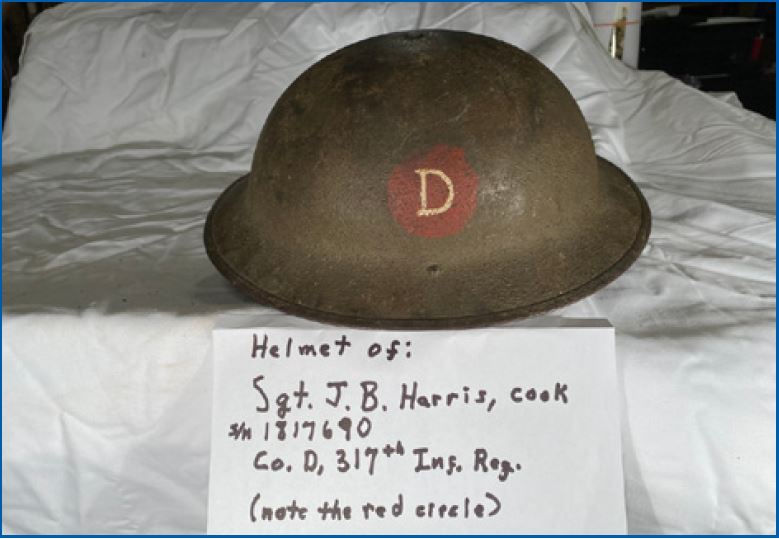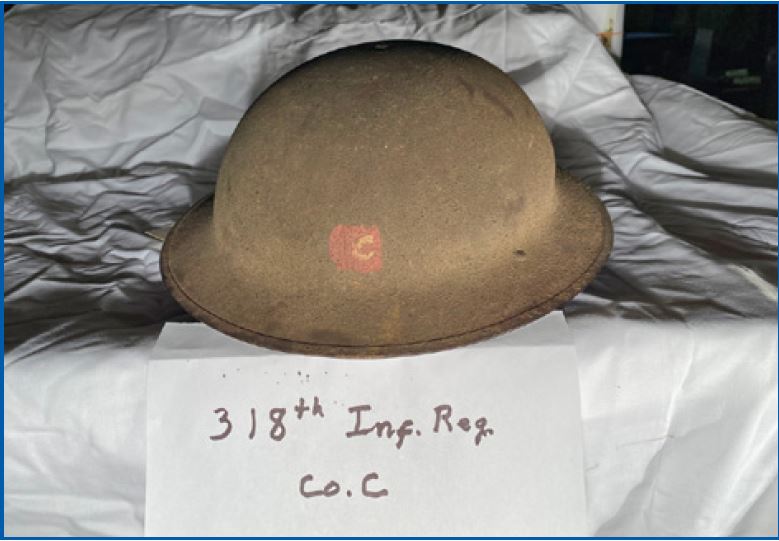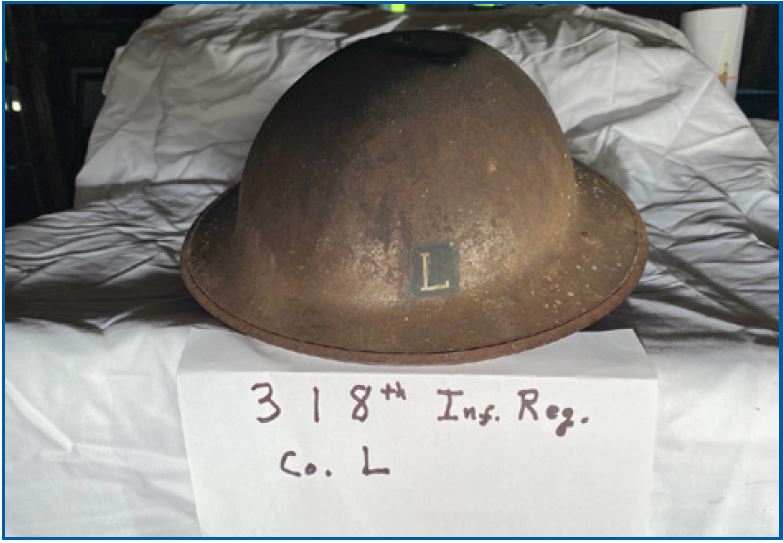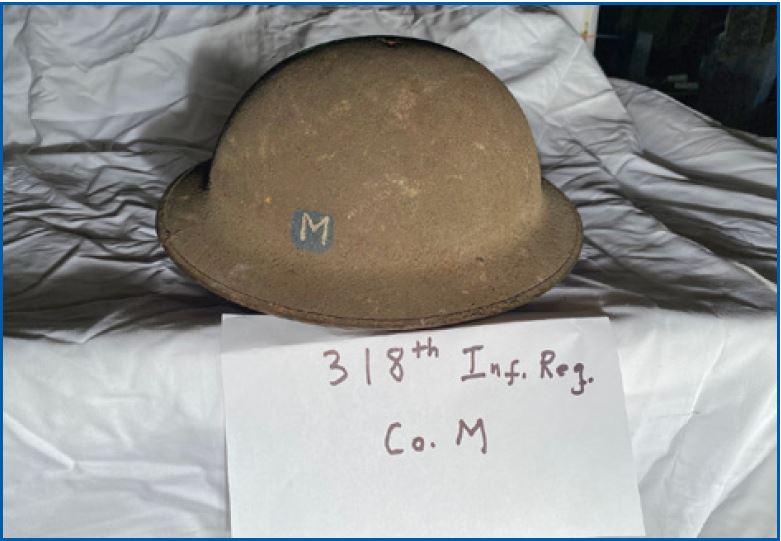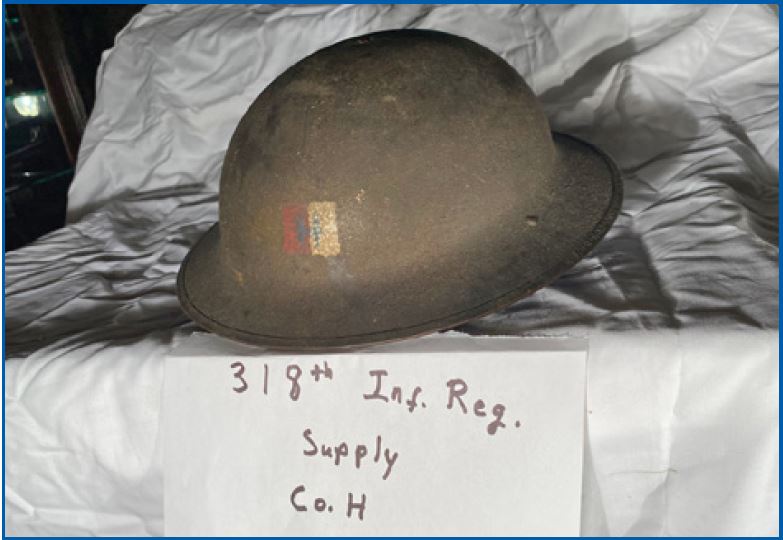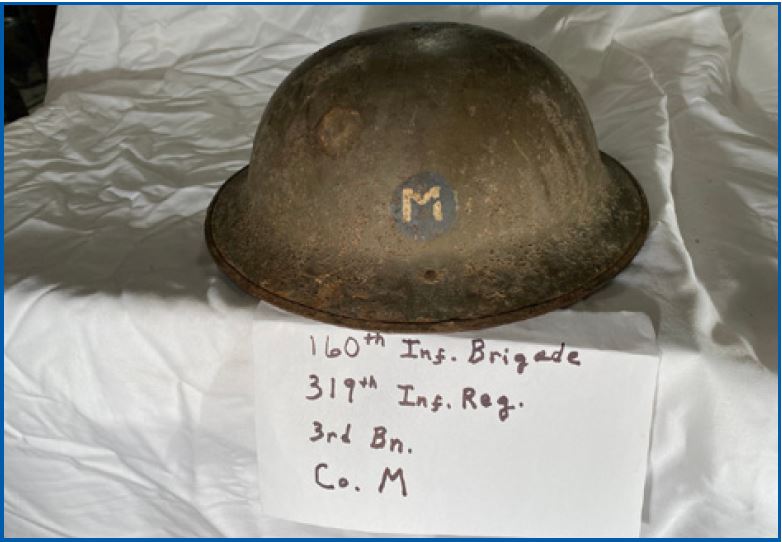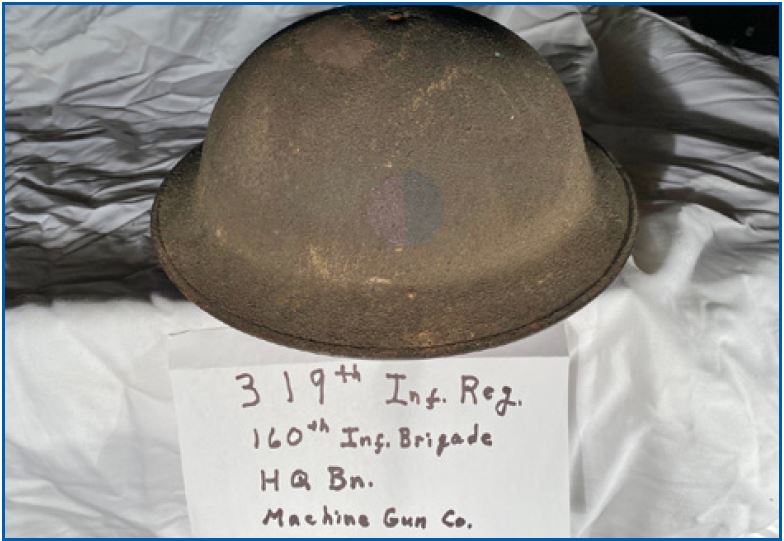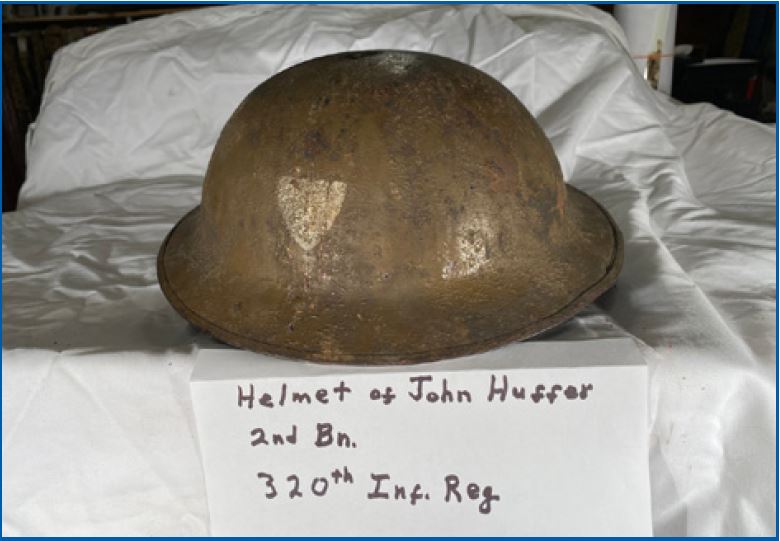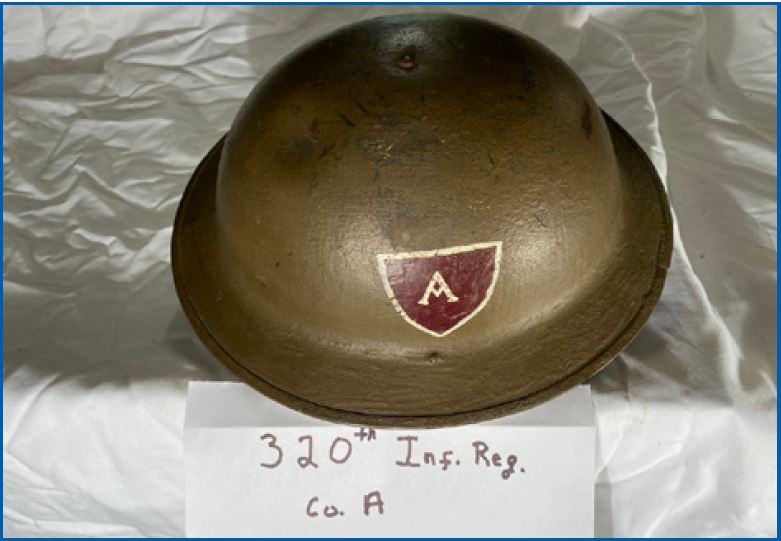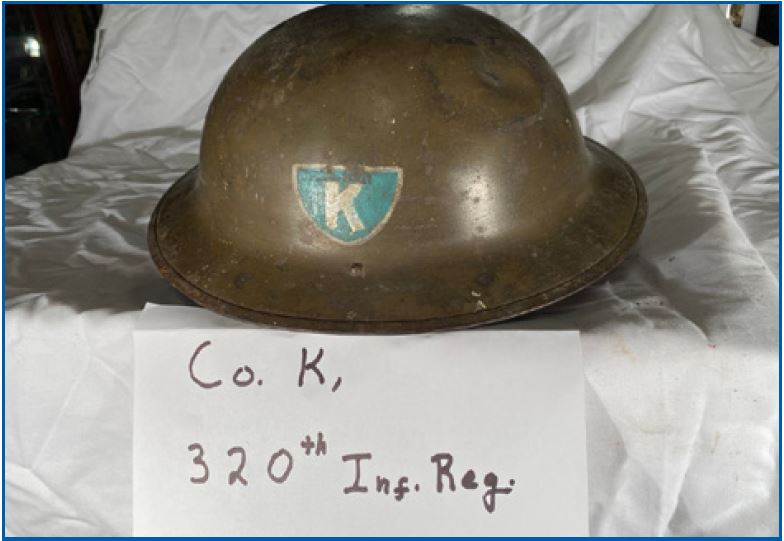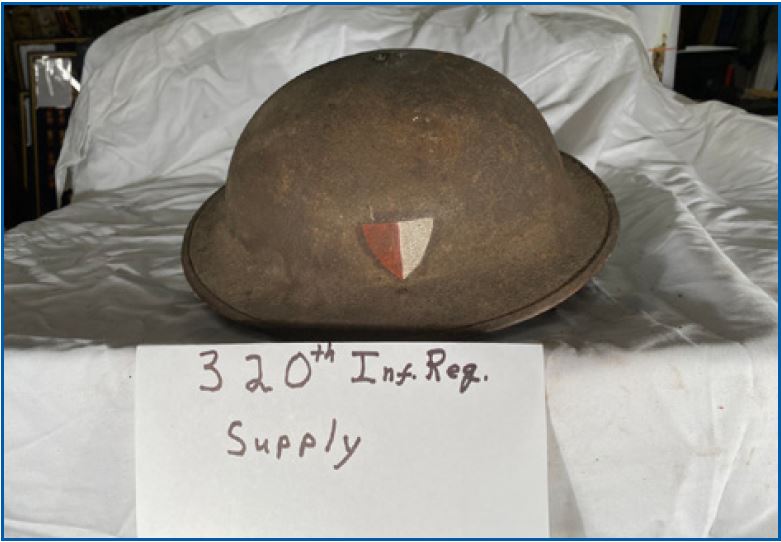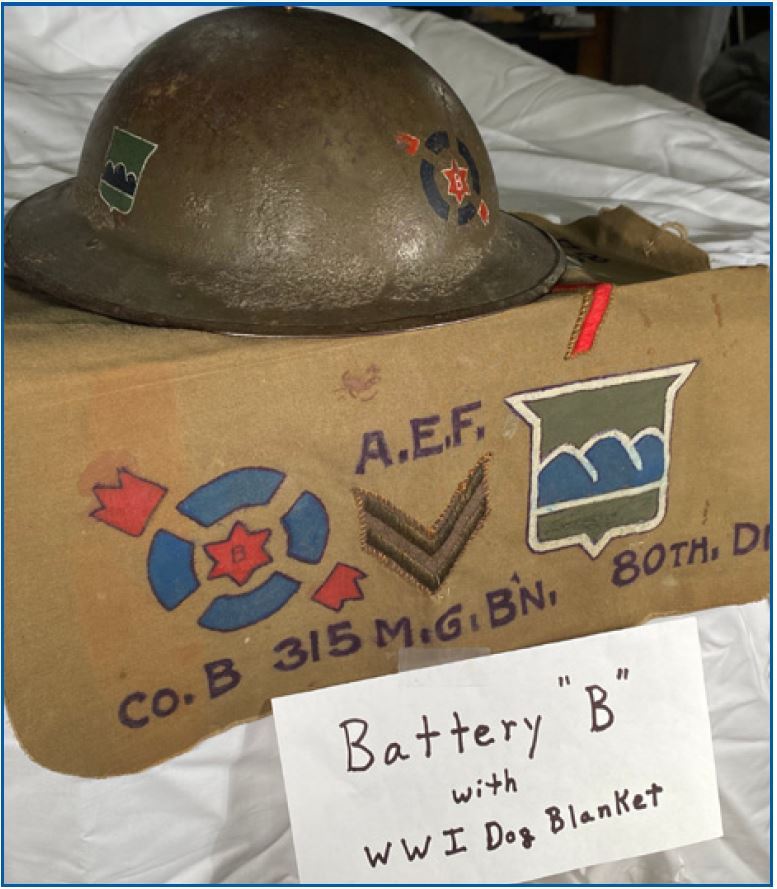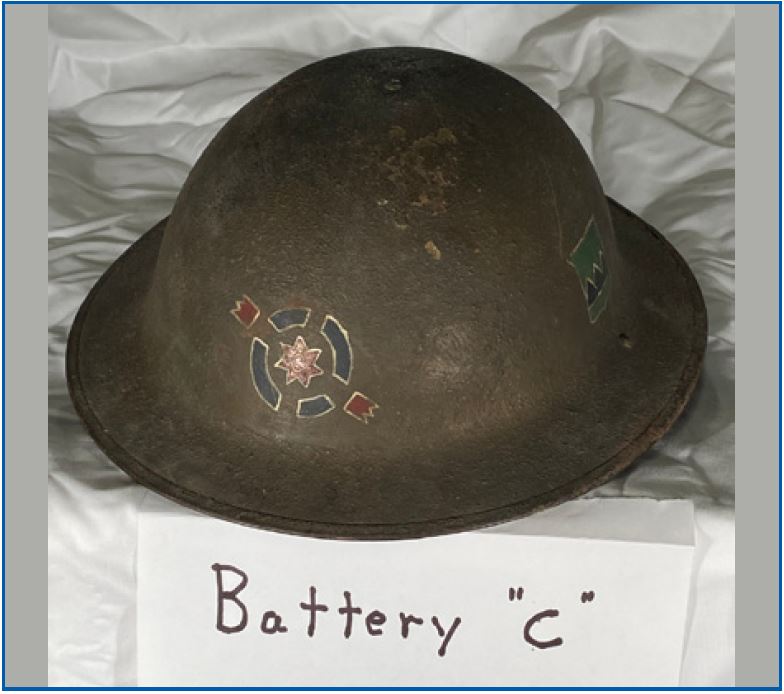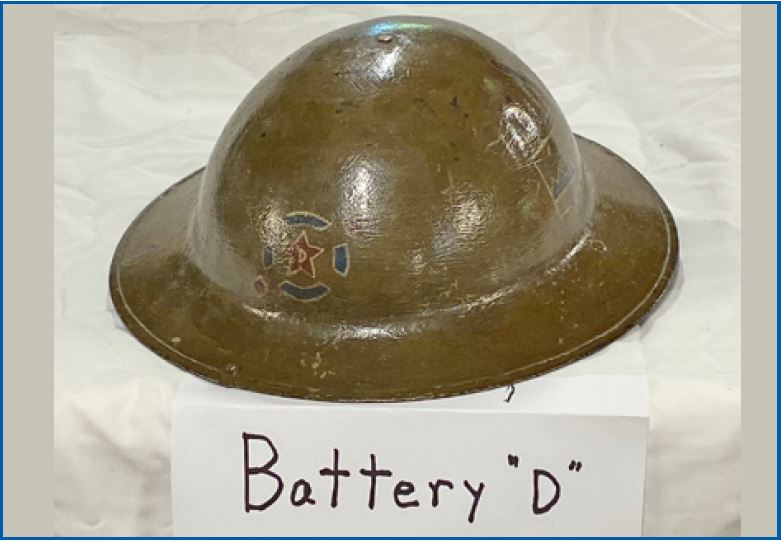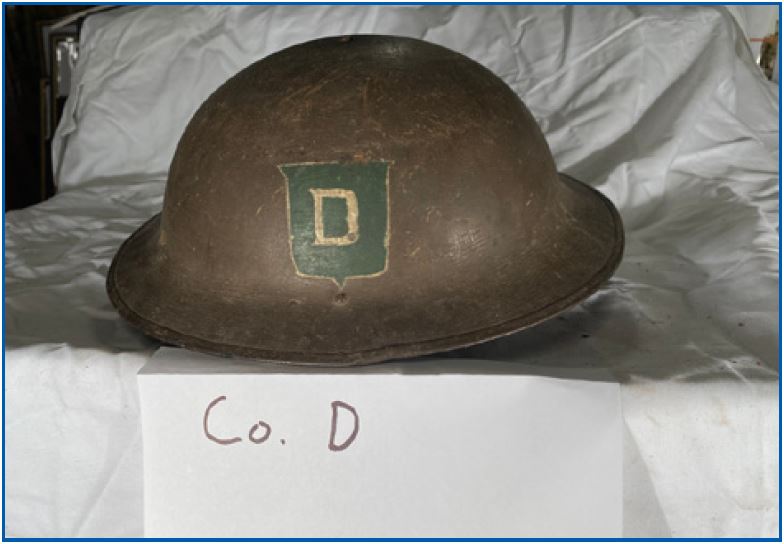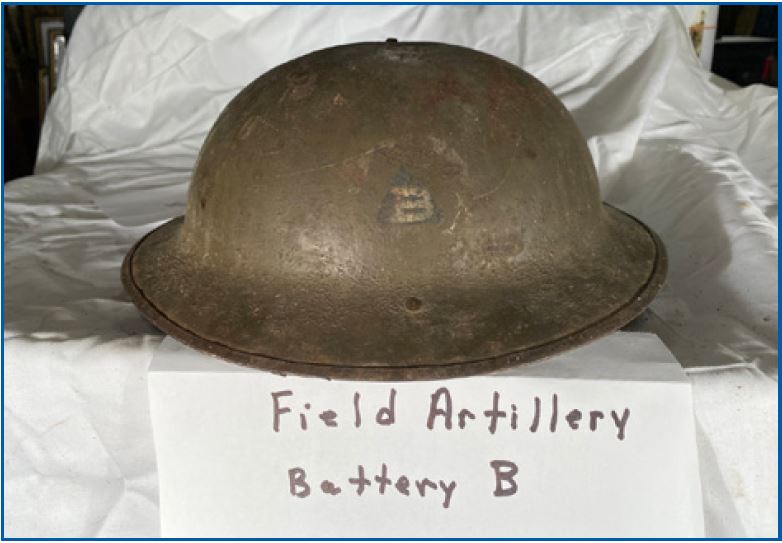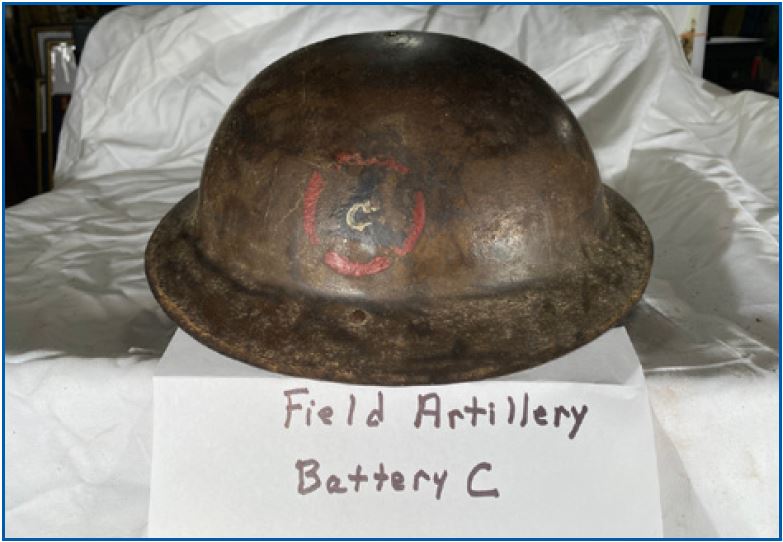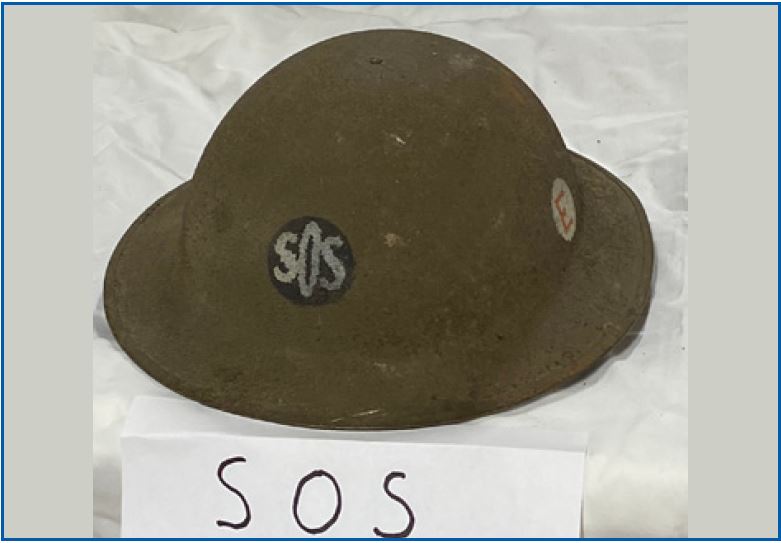80th Division WWI Battalion Designs
The following descriptions are from Maj(r) Gary Schreckengost's book, "Only Moves Forward! The 80th Divison in World War I: Volume II Friedensturm to St. Mihiel," available on Amazon. Additional descriptions are taken from "The Mysterious 80th Division Helmet," by Sheldon Johnson.
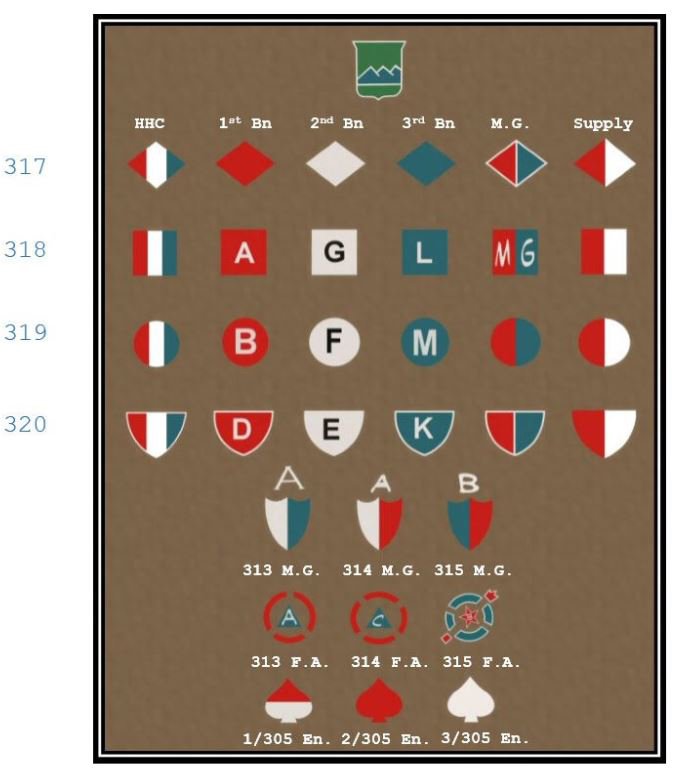
The 80th Division Helmet is the one Divisional Helmet that is still something of a mystery to collectors. The standard Divisional Insignia is itself no mystery and like most divisional insignia is found in different sizes, colors, and/or shapes. It is not unusual to find blue or green mountains, with and without white outlining. Some mountains are quite pointed and some are very rounded. Large and small mountains are also encountered. The mystery is the "Second-Insignia" that is found on nearly all 80th Division Helmets.
80th Division battalion designs that were painted on the right side of their helmets. The infantry regiments are along the top, followed by the M.G. Battalions, the Artillery Regiments, and then the Engineer Battalions. The letters represent the companies.
The companies were instructed to paint colored shapes on the right side of their helmets to help field-grade officers better identify their units. Someone from each platoon usually painted their newly assigned battalion symbol on their buddies' helmets.
The 317th Infantry was assigned a horizontal diamond, the 318th Infantry a square, the 319th Infantry a circle, and the 320th Infantry a shield. Within each regiment, the 1st Battalion was red, 2nd Battalion was white, and the 3rd Battalion was blue.
Each company then painted its letter in the center of the shape with white or black paint. The helmet symbol for the H.Q. Company of each regiment had red, white, and blue vertical stripes (like the French flag), the symbol of the M.G. Company of each regiment was painted in blue and red vertical stripes, and the symbol of the Supply Company for each regiment was red and white vertical stripes.
B/1/318th Inf., for example, had red rectangles with a white "B" in the center painted of the right side of their helmets. Some painted the division symbol on the left side or front of their helmet, but it was rare, given the photographic evidence and the surviving helmets.
The M.G. Battalions of the division had shields painted half-and-half, the Artillery Regiments had circles, and the Engineer Battalions had spades.
The divisional shoulder patches, by and large, did not come into existence until the winter of 1918-19, when they were snug as a bug in a rug in their billets. Some did have them before they entered the lines in 1918, however, and just about anything that could be painted in the 80th Division, like a wagon, had three blue (actually azure) mountains with a white shield painted on them.
The practice of painting division designs on issued equipment was generally universal across the A.E.F.
Corporal Chester Baker of F/2/112th Infantry of the 28th ("Red Keystone") Division, for example, remembered that by early-summer 1918: "The red keystone... was to be worn on all clothing and painted on the steel helmets of all [division] soldiers."[Baker]
The following are examples of various 80th Division WWI Helmets & Equipment and their Battalion designs.
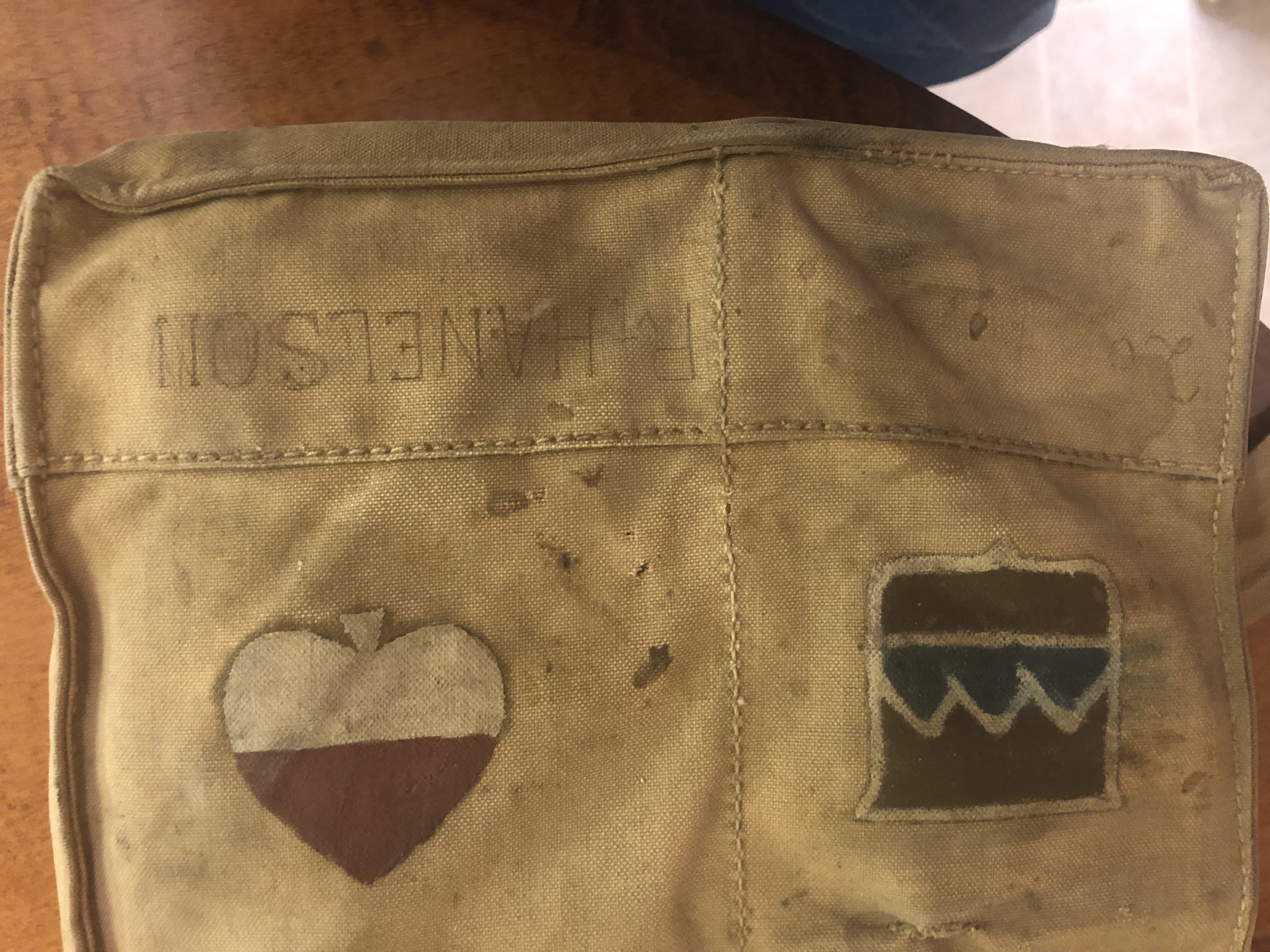
80th Division / 305th Engineer Battalion / HHC
Photo credit: Roger Nelson
The following specification provides details as to the size of the original 80th Infantry Division patch. Thanks to Jeff Wignall.
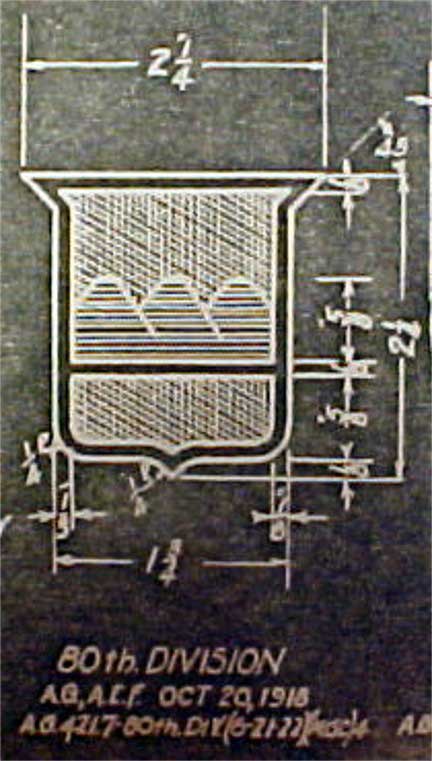
The following WWI Helmet images are from the Dr. Lee S. Anthony collection.
